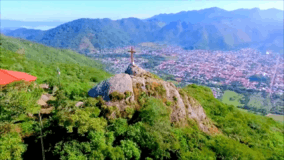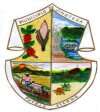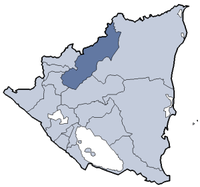Jinotega
| Jinotega | |||
|---|---|---|---|
|
Jinotega, Nicaragua | |||
| |||
 Jinotega Location in Nicaragua | |||
| Coordinates: 13°10′N 86°00′W / 13.167°N 86.000°WCoordinates: 13°10′N 86°00′W / 13.167°N 86.000°W | |||
| Country |
| ||
| Department | Jinotega | ||
| Municipality | Jinotega | ||
| Founded | 1891 | ||
| Government | |||
| • Mayor |
Leónidas Centeno Rivera | ||
| • Vice Mayor |
Rosalpina Pineda Zeledón | ||
| Elevation | 1,000 m (3,000 ft) | ||
| Population (2014) | |||
| • City | 51,073 [1] | ||
| • Metro | 429,240 | ||
| • Gentilic | Jinotegano/a | ||
| Area code(s) | Ni-Ji | ||
| Climate | Aw | ||
| Website |
http://www.alcaldiajinotega.gob.ni/ (in spanish) http://monumental96.com/jinotega/ (in spanish) | ||
The city of Jinotega (Spanish pronunciation: [xinoˈteɣa]) is the capital of the department of Jinotega in the north central region of Nicaragua.
The city located in a long valley surrounded by the cool climate and Dariense Isabelia ridge located 142km north of the capital Managua. Jinotega has a population of 123,548 inhabitants (city) and 417,372 department [CENSUS 2012]. Jinotega produces 80% of Nicaragua's coffee, which is exported to the United States, Russia, Canada and Europe.
Also in Jinotega are several rivers and a lake. Apanas, an artificial lake of 51 square kilometers that provides hydropower to much of the country Although there is some contradiction as to the origin of the name, Jinotega is generally known as "The City of Mists" (Ciudad de la Brumas) for the magnificent whisks of clouds continuously feathering through the top of the valley. Another generally accepted name is" The Eternal City of Men "(" City of Eternal Men " ).
Jinotega is bordered to the
- north by the municipalities of Santa María de Pantasma and Wiwili
- south by the municipalities of Matagalpa and Sébaco
- east by the municipalities of El Cua, Bocay, and Tuma La Dalia
- west by the municipalities of La Trinidad, San Rafael del Norte, La Concordia, and San Sebastian de Yali
Geography

- Mountains: Cuspire, Chimborazo, Kilambe (1750m), Peñas Blancas, Zinica, Saslaya, Baba, Asan Rahra
- Valleys: Jinotega city, Pantasma, Cua, Wiili, Wamblan, Bocay
- Rivers: Coco, Yali, Montecristo, Pantasma, Cua, Wamblan, ULwaskin, Bocay, Wina, Amaka, Tuma, Viejo
- Lakes: Apanas
- Municipalities nearby: Yali, Pantasma, San Rafel del Norte, La Concordia, El Cua, Wiwili, Bocay
The climate is subtropical and tropical in the high valleys, dry in summer, rainy in winter and cool in the mountains.
History
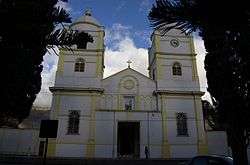
The Indian city of Jinotega existed before the Spanish arrived. It is unknown when the first Spanish settled in Jinotega. It had to be after the year 1581, because the Spanish Census of 1581 shows it was still an Indian town. Even in 1703 when missioner Fray Margil de Jesus visited Jinotega there were no permanent Spanish settlers there. However by 1731 there were some permanent ones, like Juan de Castro, othe Spaniard lastnames like Gadea, Duarte, Altamirano, Alburquerque, Fray Juan de Zeledon, and some soldiers. Zeledon is said to have invited some nephews to come here who let descendants who still live there: some of them are Zeledon of La Concordia, Umure and Ocotal Espeso and Pacsila, idilic communities located between the cities of Matagalpa and Jinotega. According to locals, Jinotega was founded when five Spanish families moved north from Nueva Segovia by year 1700 to settle the "dry zone" or "zona seca" community of Jocomico, Naranjo, Umure, Ocotal Espeso, which lies bout 15 kilometers south of the city. The city of Jinotega was formed in the middle of a bowl-like mountainous area. In 1703 a large cross was placed by Spanish friar Margil de Jesus at the highest point of Chirinagua in the western edge of the city, now called Cerro de la Cruz. It is illuminated at night, and tourists organize hiking tours to this peak.
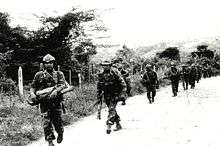
The name Jinotega derives presumably from the Nahuatl word "Xinotencatl". Linguists disagree on the meaning of this word. Some interpret it as "City of the Eternal Men", whereas others translate it as "Neighbors of the Jiñocuabos". The word "Neighbors" here should be understood as being like the ending "ville" or "land". The interpretation as "Neighbors of the Jiñocuabos" is more likely to be the right one, since Jiñocuabo is a tree (Bursera simaruba (L.) Sarg.) praised by the natives for curative properties. In the Nahuatl-Language Jiñocuabo seems to mean "mangy tree".
The Jinotega region is perhaps the most war-torn region in Nicaragua's history. Its remote location as well as its proximity to the border with Honduras made it a haven for rebel forces throughout the last seven decades. The most intense battles took place in the Department of Jinotega between 1927 and 1934 under Augusto C. Sandino and his troops (popularly known as "los bandoleros") against the American occupation troops. Later, at the end of the 1970s, Jinotega was a place of bitter war between the troops of Anastasio Somoza Debayle and the civilian rebel population. Somoza was defeated on July 19, 1979. After a short period of peace, civil war began again between government troops of the new Sandinista regime and the Contra rebels who felt betrayed by the Sandinistas and were funded by the United States.
Economy
Starting from the late 19th and early 20th centuries, Jinotega was driven by the economics of coffee. Jinotega is still a major supplier of coffee for Nicaragua and for other countries. The basic grains (corn, beans, and wheat), vegetables (tomato, lettuce, onion, cabbage, parsley, radish, celery, broccoli, potatoes, taro, carrot, cucumber) and fruit species also contribute to its economy.
Hydroelectrical energy generated by Centro América Plant supplies energy for much of the country.
There are three universities in Jinetoga:[2]
- Public Universities
- Universidad Nacional Autónoma de Nicaragua León (UNAN)
- Instituto Nacional Tecnológico (INATEC).
- Private University
- Universidad del Norte de Nicaragua (UNN).
Notable people
- Benjamín Zeledón, born in La Concordia. Fought in the war against U.S. Marines in 1912
- President of Nicaragua Bartolomé Martínez Hernández
- Otto de la Rocha (Guitarist, singer, and composer)
International relations
Jinotega is twinned with:
|
|
References
Further reading
- (Spanish) Monografía de Jinotega, by Dr. Julián N. Guerrero and Lolita Soriano (1966), translated into German by Edgard Arturo Castro-Frenzel (2006), also available at the Iberoamerican Institut Berlin (www.iai.spk-berlin.de). German version (pdf-file) might be downloaded (http://www.bio-nica.info/topic/index.html).
- (Spanish) Jinotega-Recopilación histórica, by Simeón Jarquín Blandón (1991), N 972.85 I37, translated into German by Edgard Arturo Castro-Frenzel (2006), also available at the Iberoamerican Institut Berlin (www.iai.spk-berlin.de). German version (pdf-file) might be downloaded (http://www.bio-nica.info/topic/index.html).
Other books related to Jinotega
- Nicaragua en mis recuerdos, by Dr. Simeón Rizo Gadea, in Spanish
- Monografía de Jinotega, by Julián N. Guerrero y Lolita Soriano, in Spanish (1966).
- Monografía de Jinotega, by Julián N. Guerreo und Lolita Soriano, translated into German by Edgard Arturo Castro-Frenzel (2006), available at the virtual library of Bio-Nica (bio-nica.info)
- Jinotega- Recopilación histórica, by Simeón Jarquín Blandón, in Spanish (1991), N 972.85 I 37.
- Jinotega- Recopilación histórica, by Simeón Jarquín Blandón, transtlated into German by Edgard Arturo Castro-Frenzel (2006), available at the virtual library of Bio-Nica (bio-nica.info)
- The Naturalist in Nicaragua, by Thomas Belt, in English (1873)
- El Naturalista en Nicaragua, by Thomas Belt, in Spanish, translated by Dr. Jaime Incer Barquero (1975)
- Nicaragua, by René Moser, in French, English, German and Spanish, in one volume (1974), ISBN 2-85518-008-2
- Deutsches Leben in Nicaragua-Auswanderer-Schicksale, by Dr. Götz Freiherr von Houwald, former German ambassador to Nicaragua, in German (1986), ISBN 3-925290-60-5, also available at the Iberoamerican Institut Berlin (www.iai.spk-berlin.de)
- Los alemanes en Nicaragua, by Dr. Götz Freiherr von Houwald, former German ambassador to Nicaragua, in Spanish, translated from German by Mrs. Resie Pereira (1975)
- Mayangna-Wir - Zur Geschichte der Sumu-Indianer in Mittelamerika, by Dr. Götz Freiherr von Houwald, former German ambassador to Nicaragua, in German (1990), also available at the Iberoamerican Institut Berlin (www.iai.spk-berlin.de), ISBN 3-87673-134-8
- Mayangna- Apuntes sobre la historia de los indígenas Sumu en Centroamérica, by Dr. Götz Freiherr von Houwald, former German ambassador to Nicaragua, in Spanish, translated from German by Edgard Arturo Castro-Frenzel (2003), also available at the Iberoamerican Institut Berlin (www.iai.spk-berlin.de), ISBN 99924-53-15-X
- Raices del centro-norte de Nicaragua, by Eddy Kuhl, 2010. Historian, Member of the Academy of Geography and History of Nicaragua
- Belli, Gioconda (2003) [2000]. El país bajo mi piel : memorias de amor y guerra [The Country Under My Skin: A Memoir of Love and War]. Bloomsbury. OCLC 59462896.
External links
| Wikimedia Commons has media related to Jinotega, Nicaragua. |
| Wikivoyage has a travel guide for Jinotega. |
- Photograph of Jinotega
- 'Jinotega Life', a Web site dedicated to entertainment, culture and tourism in Jinotega (in Spanish)
- Soppexcca, cooperative alliance of small coffee producers located in the city of Jinotega
- AVODEC, Grassroots non-profit based in Jinotega working with community development
- Circulo de Amigas, Non-profit working to alleviate poverty one girl at a time
- Portal del Norte de Nicaragua
